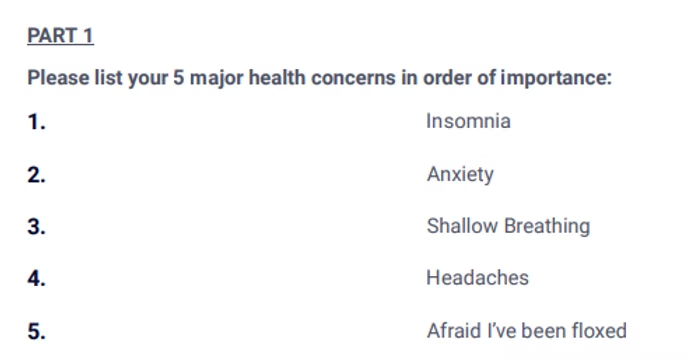
The G.I. MAP Test by Diagnostic Solutions Laboratory is one of the most advanced stool tests available, offering a deep dive into gut health by assessing various markers and potential issues. Here’s a more detailed breakdown of what it includes:
1. Pathogen Detection
The test screens for over 15 types of bacteria, parasites, fungi, and viruses that may cause infections or GI disturbances. This includes common culprits like Clostridium difficile (C. diff), Salmonella, and H. pylori, as well as opportunistic pathogens that can disrupt gut function.
2. Commensal Bacteria
Commensal, or “friendly” bacteria, are key to gut health, immune modulation, and nutrient absorption. The G.I. MAP Test measures the levels of beneficial bacteria, like Lactobacillus and Bifidobacterium, as well as Firmicutes and Bacteroidetes. Imbalances in these bacteria may indicate dysbiosis, which can contribute to various GI symptoms.
3. Markers for Digestive Function
This test assesses markers for pancreatic elastase, an enzyme important for digestion, and stearic acid to check for fat malabsorption. Low pancreatic elastase levels can suggest pancreatic insufficiency, where the body struggles to digest fats and proteins properly.
Inflammation markers like calprotectin and lactoferrin help identify inflammation in the GI tract, often associated with IBD, infections, or other gut disorders. Secretory IgA (sIgA) levels are measured to assess the immune response in the gut mucosa, which can be weakened by chronic infections or imbalances.
One unique feature is the identification of antibiotic resistance genes, particularly for H. pylori and some other bacteria. This allows healthcare providers to know if an infection might be resistant to certain antibiotics, guiding more effective treatment choices.
6. Opportunistic Microbes and Fungi
The test also screens for opportunistic microbes and yeasts, like Candida albicans, which can grow out of control if gut balance is disrupted. These organisms can lead to symptoms like bloating, gas, and fatigue, and may contribute to broader health issues if unchecked.
7. Intestinal Permeability (Leaky Gut) Markers
By examining certain markers, such as zonulin, which regulates tight junctions in the gut lining, the test can indicate increased intestinal permeability, also known as leaky gut. Leaky gut allows toxins, partially digested food, and other substances to “leak” into the bloodstream, which can trigger immune responses and systemic inflammation.
Uses in Healthcare
The G.I. MAP Test is especially useful for individuals experiencing chronic digestive issues, fatigue, brain fog, mood disorders, and even certain skin conditions. Practitioners use this test not only to identify current infections but also to monitor the effectiveness of treatments for gut health.
How It Works
Patients collect a small stool sample at home, which is then sent to the lab for analysis. Results are returned to the healthcare provider with a detailed report that explains levels of each marker, providing actionable insights.
In Conclusion
The G.I. MAP Test’s thorough approach allows practitioners to identify root causes of GI issues and develop targeted treatment plans. It’s valued as a holistic tool for addressing gut health as part of overall wellness.
Case Number Two
Frequently Asked Questions (FAQ)
The GI-MAP (Gastrointestinal Microbial Assay Plus) by Diagnostic Solutions Laboratory is a comprehensive stool test that provides a deep dive into gut health. It checks for pathogenic bacteria, parasites, and viruses; measures levels of beneficial commensal bacteria; assesses digestive function (like pancreatic elastase); identifies markers of gut inflammation and immune response (like calprotectin and sIgA); screens for opportunistic microbes and fungi (like Candida); and includes markers for intestinal permeability (leaky gut) and antibiotic resistance genes.
The test is especially useful for individuals experiencing chronic digestive issues, fatigue, brain fog, mood disorders, and certain skin conditions. It is used by practitioners to identify the root causes of these symptoms, from infections and dysbiosis to pancreatic insufficiency and leaky gut.
The test measures levels of beneficial bacteria (like Lactobacillus and Bifidobacterium) to ensure a healthy foundation. It also identifies potential dysbiosis by detecting overgrowth of opportunistic bacteria and the presence of pathogenic bacteria that can cause infections and GI disturbances.
The GI-MAP test includes a marker called zonulin, which regulates the tight junctions in the gut lining. Elevated levels of zonulin can indicate increased intestinal permeability, or "leaky gut," a condition where toxins and undigested food particles can pass into the bloodstream, triggering inflammation and immune responses.
The process is designed for convenience. You collect a small stool sample at home using a provided kit. The sample is then mailed to the laboratory for analysis. A detailed report is generated and sent to your healthcare provider, who interprets the results to create a targeted treatment plan.















